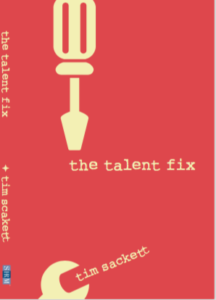Yeah, but we need talent NOW!
I hear you. No, really, I HEAR you! And I feel your pain, I also need talent right now. In fact, I have not spoken to one organization since March who hasn’t needed talent. Everyone needs talent, now!
Here’s the thing…
(Editor’s note: This is where Tim will wax poetically about the big philosophies in life and some sh*t.)
It’s not about winning the battle, it’s about winning the war! CEOs love saying stupid sh*t like this, am I right? Actually, we aren’t fighting a war, we’re just trying to fill some jobs, calm down, Cindy! (Cindy is my fictional CEO, FYI) So, we have some short-ish term pain, currently in finding talent. The problem is, most TA leaders and organizations will spend 99% of their focus on this current issue.
When you do this, the current issue, becomes your future issue, because you have no vision or plan to actually get out of your current situation. Your current situation sucks, but you don’t want it to keep sucking. A part of me wants to tell leaders to just ignore the present if they truly want to solve the problem. Just go to your hiring managers and say, “Look, we can’t help you, you’re on your own!” The pain will probably be about the same anyway, but you’ll actually get to build a true plan for solving your real issue long term.
Of course we can’t do that without getting fired by Cindy.
We must play the short game and the long game simultaneously, at least, that’s what the best leaders will do in this time of crisis hiring. You’ll have your team fight the fire, while you truly maintain a focus on the future, ignoring the burning building you’re sitting in the middle of. That’s hard to do, and the only way you get away with it is by constantly communicating you’re working on a “permanent” solution for the crisis for the future.
The reason we don’t play the long game in talent acquisition is that we feel too much pressure to fix the present. The problem is you can’t fix the present, that is beyond broken, you can only fix the future. But, if our c-suite trusts we know what we are doing, we buy ourselves time to do what really needs to be done to fix this stuff permanently. Turns out, they will trust us more if we are communicating our plan for the big fix!
The Long Game Plan
Blah, blah, blah, just tell us the plan!
1. Admit that your stuff is currently broken and a mess, but we’ll have to muscle our way through this crisis in the short term.
2. Have a vision of a long-term plan and solution. We need some belief we won’t be living in this hell forever.
3. Look for some short-term wins for your team. Maybe it’s a new tool, some extra help, something that shows them this time it’s going to be different.
4. Make a timeline of action items. This might be a year or more. If you’re stuck in a crappy, dated ATS contract for the next 18 months, your plan is going to change drastically right away. But, this also gives you time to build the right process, tech stack, and team you need.
5. Get alignment of your plan with finance to secure the resources you’ll need. This actually solidifies your plan in concrete because finance pros are pretty good at following up constantly wanting to know how and when you’re going to use those approved resources!
And of course, constantly communicate publicly what you are doing and going to do. Being a great leader is part execution, part politician, and part being a dealer in hope. And right now, your organization needs some talent hope!


